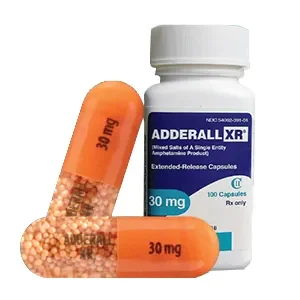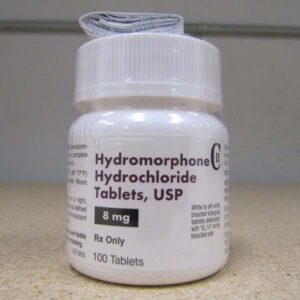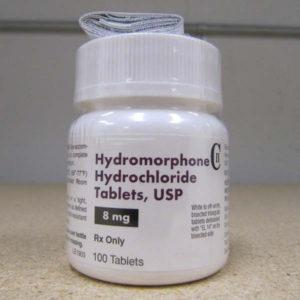Buy Methadone on line
Buy Methadone on line (online) can be abused recreationally for its opioid high or as a method of self-medication, taking it in between doses of other opioid drugs to keep withdrawal symptoms at bay. It also can be abused as a method of trying to blunt the comedown from shorter-acting opioids.
Due to its scheduling, methadone must be administered by a trained health care professional under direct supervision. Since it is a full agonist opioid drug, methadone is in itself addictive, and even regular medical use can lead to tolerance and dependence. Sometimes, it is abused by those who have a legitimate prescription for the drug for medicinal purposes.
Specific signs that methadone is being abused include:
- Asking more than one doctor for a prescription of methadone in a practice known as “doctor shopping”
- Taking methadone in between prescribed doses or in higher doses than prescribed
- Continuing to use methadone after the prescription has run out
- Taking methadone in a way other than as intended, such as injecting, smoking, or snorting it
- Obtaining methadone through illicit channels, even getting it from a friend or family member for free
- Any alteration or deviation from the exact way methadone was prescribed
A methadone high can often look similar to alcohol intoxication. Slurred speech, impaired reflexes and coordination, increased sociability, difficulty making rational decisions, lowered inhibitions, increased risk-taking behaviors, mood swings, and impaired thought processes can all be signs of methadone abuse. Buy Methadone on line (online)
Overdose and Dangers of Misuse
The U.S. Centers for Disease Control and Prevention (CDC) reports that every day in the United States, more than 46 people die from an overdose involving a prescription painkiller. A potentially fatal overdose is one of the major risk factors of methadone abuse.
Methadone is a long-acting opioid that is stored in the body and brain for up to several days. The high is liable to wear off much more quickly, and this can encourage a person to take more or to take additional drugs to prolong the good feelings.
The journal Pharmacy & Therapeutics explains that after the analgesic effects wear off, methadone remains active in the bloodstream, and the respiratory depressant effects can peak later and keep working for a while. Part of what makes opioid drugs so dangerous is their affinity to slow respiration and depress the respiratory system, thereby affecting the person’s ability to breathe. During an overdose, breathing can become shallow or even stop altogether.
Pupils often constrict during an overdose. Body temperature drops, leading to cold, clammy skin and a bluish tint to the nails, lips, and skin. Blood pressure and heart rate are also depressed. Muscle flaccidity and weakness, tremors, nausea, and vomiting, drowsiness, extreme confusion, and loss of consciousness can also be symptoms of a methadone overdose. An overdose requires immediate medical attention and can be reversed with the rapid administration of the opioid antagonist drug naloxone.
Methadone works by binding to opioid receptors in the brain, which can block pain sensations and also increase levels of dopamine, hence the feelings of pleasure. Methadone also depresses the central nervous system, which in a sense helps to lower the stress response, but it also can overwhelm the system when the body can’t metabolize it fast enough, leading to a toxic buildup and overdose.
Mixing other central nervous system (CNS) depressants with methadone, such as alcohol, other opioids, sleeping aids, or benzodiazepines, greatly increases the risk for overdose. Since methadone is a mind-altering drug, it can elevate the odds for making poor choices that can lead to possible injuries, accidents, criminal or legal troubles, and other negative social, occupational, physical, and emotional hazards. The U.S. National Library of Medicine (NLM) reports that methadone can have the following side effects:
Methadone Side Effects
- Dry mouth
- Dizziness
- Flushing
- Trouble with urination
- Sore tongue
- Headache
- Sleep problems
- Weight gain
- Stomach pain
- Vision issues
- Mood variations
- Buy Methadone on line (online)
Potential Long-Term Damage
As an opioid drug, regular use of methadone can lead to tolerance. When methadone tolerance builds, a person will need to take more of the drug with each dose for it to keep working the same way. This is because methadone makes changes to the way the brain sends and receives its chemical messengers and alters its chemical composition. The brain then expects methadone to keep making these changes and will stop making, sending, and reabsorbing these neurotransmitters around the central nervous system in its normal fashion. The chemical structure of the brain is thereby altered by chronic methadone use, and dependence can be a common side effect of long-term use.
Drug dependence will make it difficult for the brain to find its normal balance without methadone. If the drug is stopped, withdrawal symptoms can begin. Methadone withdrawal can start within about 24 hours to 30 hours after the last dose, and it can include both physical and emotional symptoms, such as:
Methadone Withdrawal Symptoms
- Nausea
- Diarrhea
- Stomach cramps
- Muscle aches
- Fever and sweating
- Racing heart rate
- Elevated blood pressure
- Breathing issues
- Back, bone, and joint pain
- Tremors
- Agitation
- Runny nose
- Watery eyes
- Dilated pupils
- Yawning
- Restlessness
- Anxiety
- Goosebumps
- Insomnia
- Depression
- Buy Methadone on line (online)
The prescribing information for oral methadone solution, published by the U.S. Food and Drug Administration (FDA), warns that use of the drug can also lead to serious heart arrhythmias and QT interval prolongation, a serious condition involving irregular and chaotic heart rhythms that can be life-threatening. The FDA explains that this condition is most often reported in people who take large doses of methadone every day for pain, but it can also occur in those who use methadone during opioid addiction maintenance treatment.
Symptoms of Addiction
Since methadone acts on the levels of dopamine in the brain, which helps to regulate moods and feelings of pleasure, dopamine levels can drop during withdrawal. This can lead to intense drug cravings and trouble with feeling happy without methadone. It can then become hard to stop taking it, and drug use can become compulsive.





Reviews
There are no reviews yet.